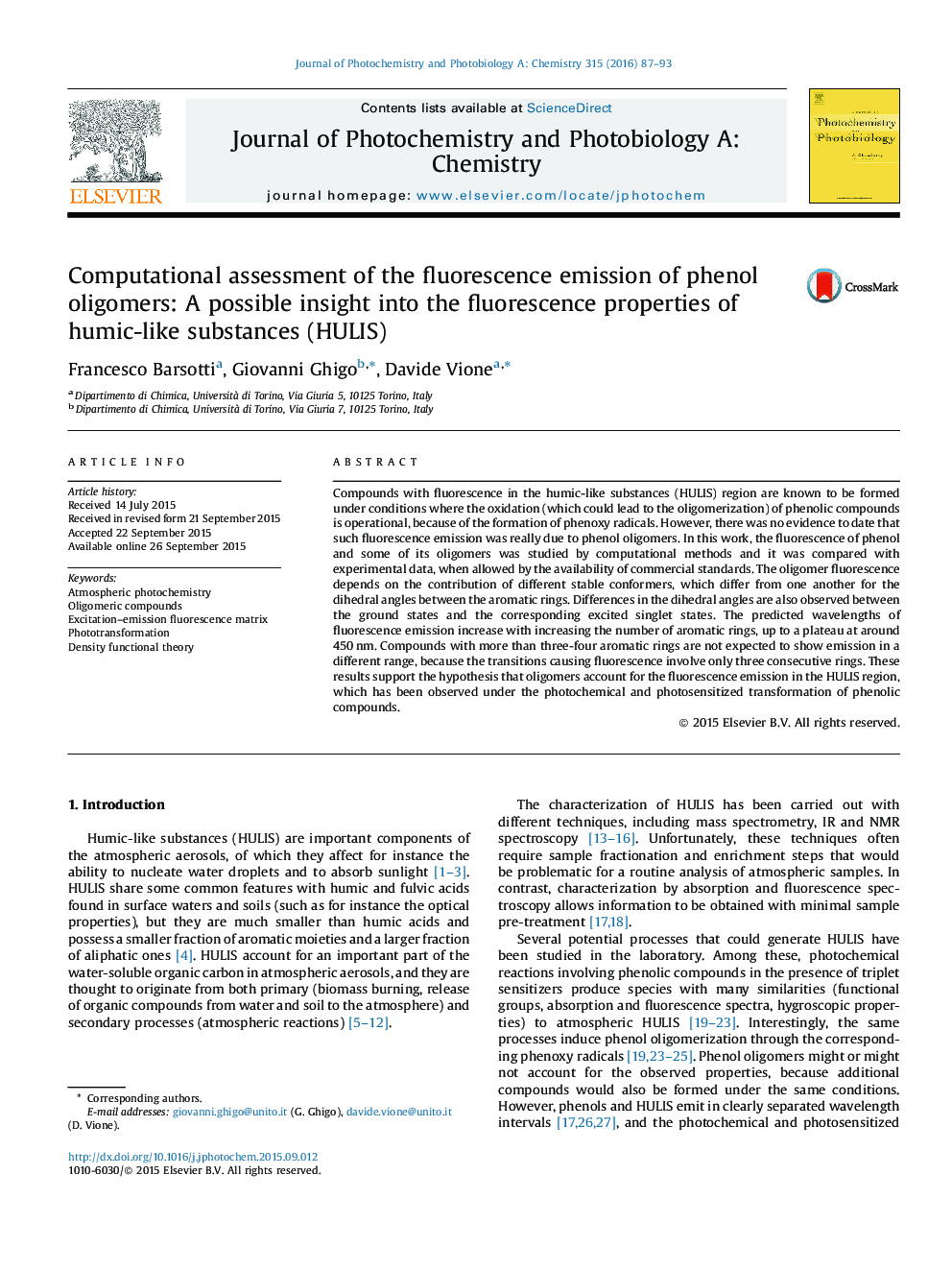| کد مقاله | کد نشریه | سال انتشار | مقاله انگلیسی | نسخه تمام متن |
|---|---|---|---|---|
| 26438 | 43952 | 2016 | 7 صفحه PDF | دانلود رایگان |

• The fluorescence emission of phenols involves S1 → S0 transitions.
• Fluoresce emission was calculated for phenol oligomers.
• The emission maximum reaches a plateau (around 450 nm) with increasing ring number.
• The calculated emission of phenol oligomers is well within the region of HULIS.
• It could explain the HULIS-type fluorescence upon phenol phototransformation.
Compounds with fluorescence in the humic-like substances (HULIS) region are known to be formed under conditions where the oxidation (which could lead to the oligomerization) of phenolic compounds is operational, because of the formation of phenoxy radicals. However, there was no evidence to date that such fluorescence emission was really due to phenol oligomers. In this work, the fluorescence of phenol and some of its oligomers was studied by computational methods and it was compared with experimental data, when allowed by the availability of commercial standards. The oligomer fluorescence depends on the contribution of different stable conformers, which differ from one another for the dihedral angles between the aromatic rings. Differences in the dihedral angles are also observed between the ground states and the corresponding excited singlet states. The predicted wavelengths of fluorescence emission increase with increasing the number of aromatic rings, up to a plateau at around 450 nm. Compounds with more than three-four aromatic rings are not expected to show emission in a different range, because the transitions causing fluorescence involve only three consecutive rings. These results support the hypothesis that oligomers account for the fluorescence emission in the HULIS region, which has been observed under the photochemical and photosensitized transformation of phenolic compounds.
Figure optionsDownload as PowerPoint slide
Journal: Journal of Photochemistry and Photobiology A: Chemistry - Volume 315, 15 January 2016, Pages 87–93